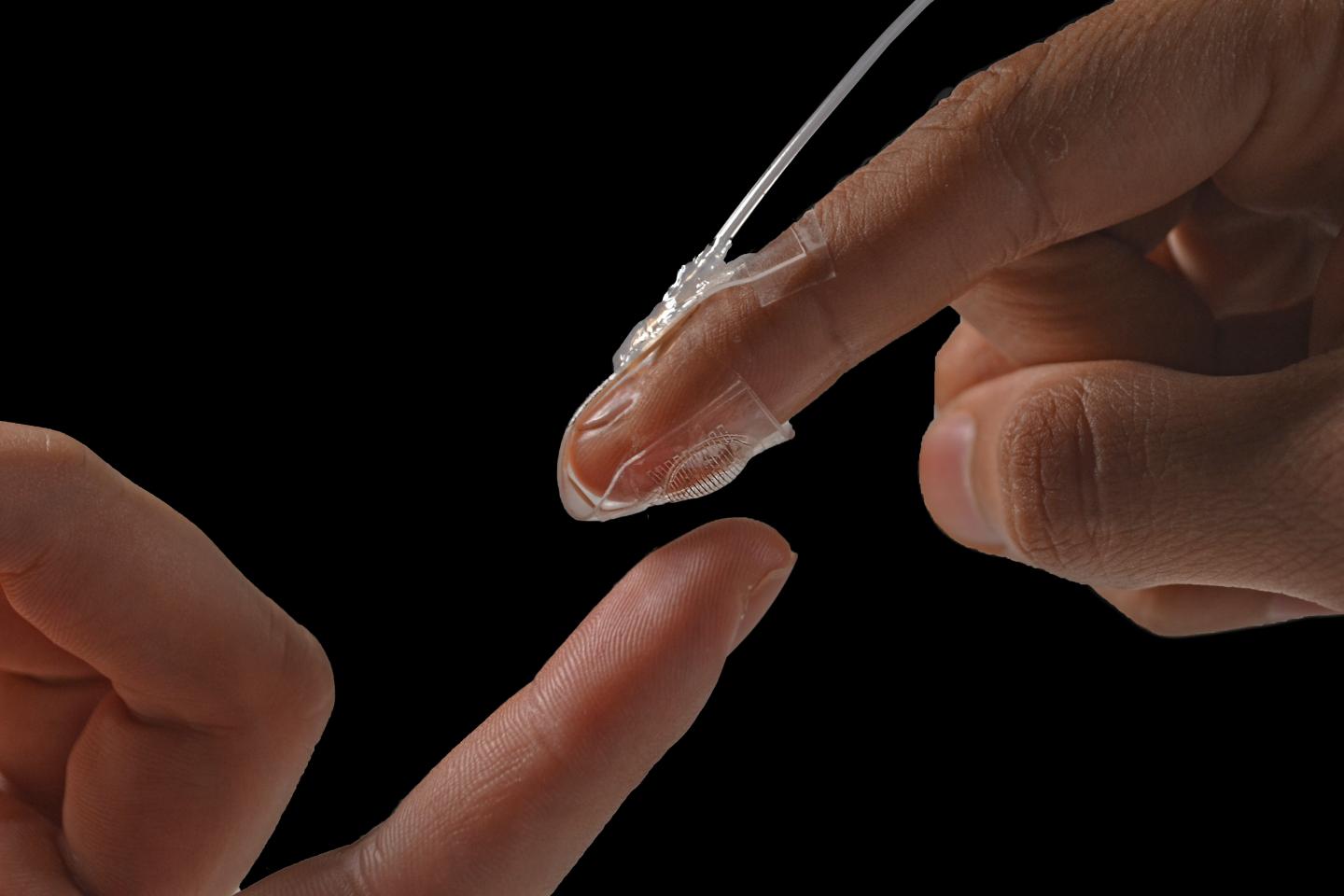
We’ve become accustomed to haptic feedback being a part of our interactions with our smartphones and other devices. Our sense of touch is a big part of the way that we interact with our environment, and small inputs can convey a lot of information. However, as anyone who has tried out haptic feedback VR tools can attest, bringing a sense of touch into interactions is key to making them feel immersive.
Now, researchers at the Swiss Federal Institute of Technology Lausanne (EPFL) have come up with a flexible artificial skin which can provide haptic feedback and could be used for everything from VR to medical rehabilitation. The skin is made of silicone and electrodes, and it can conform to shapes such as wrapping around a fingertip or wrist to provide feedback in the form of pressure or vibration.
The skin has sensors embedded within it that can detect deformations so that the feedback can be adjusted in response to movements, making it more useable and giving more realistic feedback. “This is the first time we have developed an entirely soft artificial skin where both sensors and actuators are integrated,” Harshal Sonar, researcher at EPFL and the lead author of the study, said in a statement. “This gives us closed-loop control, which means we can accurately and reliably modulate the vibratory stimulation felt by the user. This is ideal for wearable applications, such as for testing a patient’s proprioception in medical applications.”
The artificial skin is stretchable as well as flexible and can be stretched up to four times its original length. That means it should be able to withstand the rigors of daily movements, so it could be developed into a tool for patients who have lost their sense of touch. It could also be used to create highly immersive VR experiences.
“The next step will be to develop a fully wearable prototype for applications in rehabilitation and virtual and augmented reality,” Sonar said. “The prototype will also be tested in neuroscientific studies, where it can be used to stimulate the human body while researchers study dynamic brain activity in magnetic resonance experiments.”
The research is published in the journal Soft Robotics.



